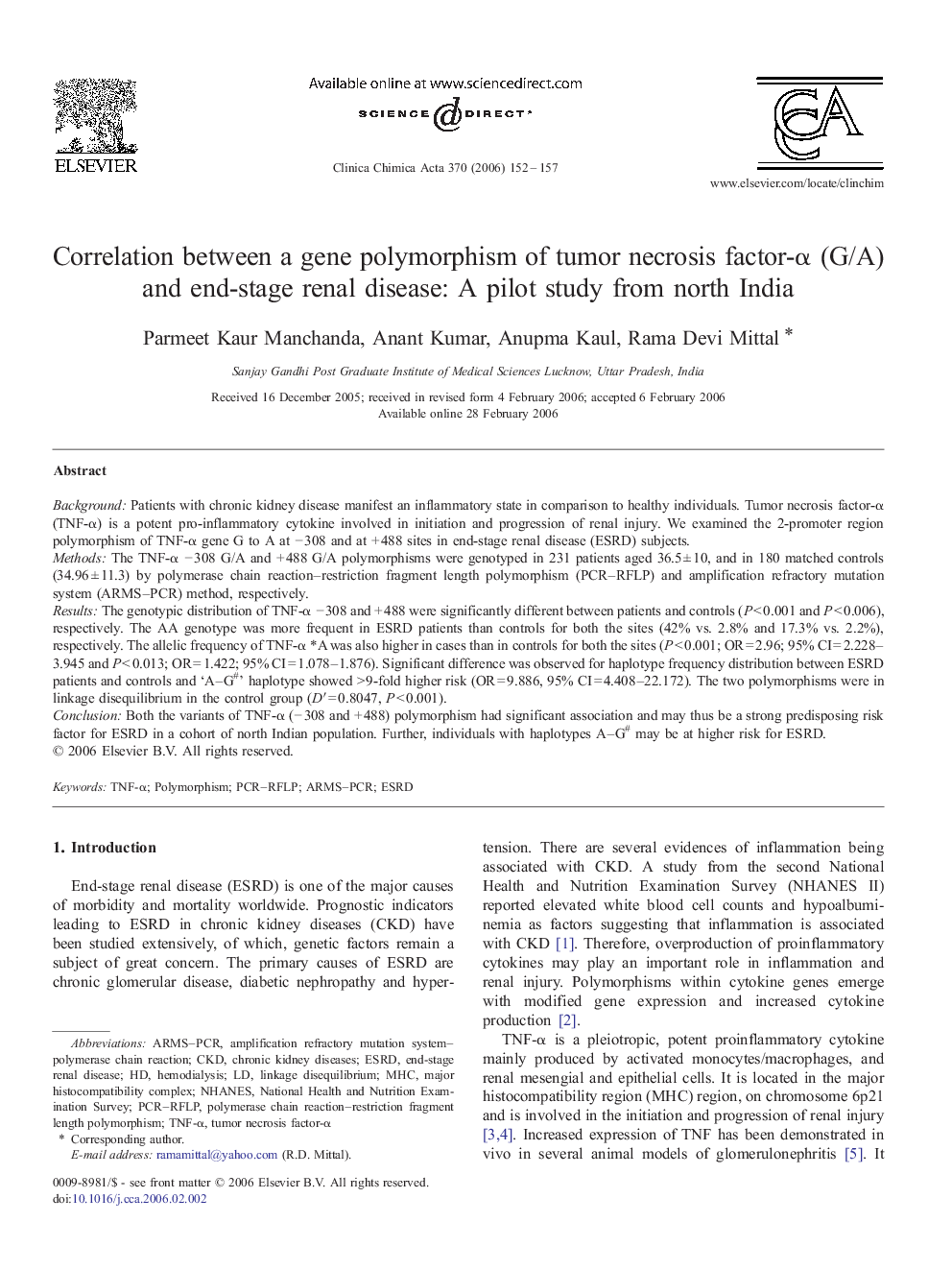| کد مقاله | کد نشریه | سال انتشار | مقاله انگلیسی | نسخه تمام متن |
|---|---|---|---|---|
| 1968041 | 1538758 | 2006 | 6 صفحه PDF | دانلود رایگان |

BackgroundPatients with chronic kidney disease manifest an inflammatory state in comparison to healthy individuals. Tumor necrosis factor-α (TNF-α) is a potent pro-inflammatory cytokine involved in initiation and progression of renal injury. We examined the 2-promoter region polymorphism of TNF-α gene G to A at − 308 and at + 488 sites in end-stage renal disease (ESRD) subjects.MethodsThe TNF-α − 308 G/A and + 488 G/A polymorphisms were genotyped in 231 patients aged 36.5 ± 10, and in 180 matched controls (34.96 ± 11.3) by polymerase chain reaction–restriction fragment length polymorphism (PCR–RFLP) and amplification refractory mutation system (ARMS–PCR) method, respectively.ResultsThe genotypic distribution of TNF-α − 308 and + 488 were significantly different between patients and controls (P < 0.001 and P < 0.006), respectively. The AA genotype was more frequent in ESRD patients than controls for both the sites (42% vs. 2.8% and 17.3% vs. 2.2%), respectively. The allelic frequency of TNF-α ⁎A was also higher in cases than in controls for both the sites (P < 0.001; OR = 2.96; 95% CI = 2.228–3.945 and P < 0.013; OR = 1.422; 95% CI = 1.078–1.876). Significant difference was observed for haplotype frequency distribution between ESRD patients and controls and ‘A–G#’ haplotype showed > 9-fold higher risk (OR = 9.886, 95% CI = 4.408–22.172). The two polymorphisms were in linkage disequilibrium in the control group (D′ = 0.8047, P < 0.001).ConclusionBoth the variants of TNF-α (− 308 and + 488) polymorphism had significant association and may thus be a strong predisposing risk factor for ESRD in a cohort of north Indian population. Further, individuals with haplotypes A–G# may be at higher risk for ESRD.
Journal: Clinica Chimica Acta - Volume 370, Issues 1–2, August 2006, Pages 152–157